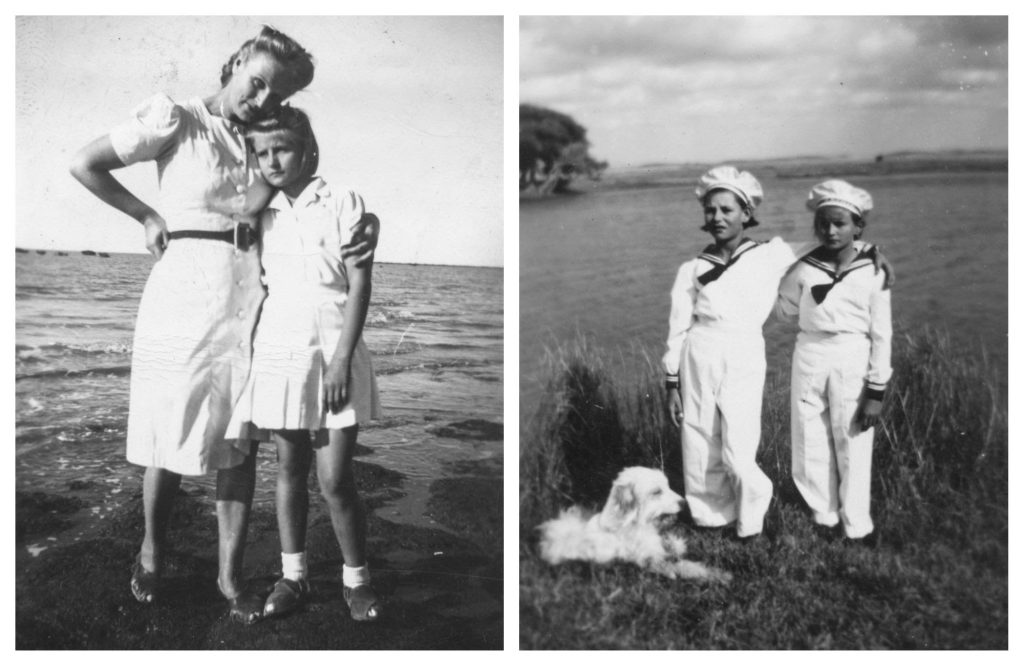The below article was published elsewhere. Fir public interest, excerpts are published here!
“After having gone through the horrors of deportation from Poland and enslavement in a Siberian labor camp, the terrible journey to escape through Kazakhstan, Uzbekistan into Iran, enduring diseases of all sorts, starvation, witnessing hundreds of people dying, India was a blessing!” she says over email. Urbikas’s mother was a nurse with the Red Cross. They lived in India for five years, two of which they spent at the Maharaja’s estate in Jamnagar and the rest in Bombay.
Danuta Urbikas’s mother Janina and sister Mira in India (left); Mira in her Navy Scout uniform in India (right). Danuta Urbikas
It is estimated that nearly 5,000 Polish refugees from Soviet camps lived in India between 1942 and 1948, although researchers have not been able to establish the exact numbers. Multiple transit camps were set up in different locations in India for refugees who were crossing over from Iran to other places. The Maharaja’s gesture was followed by a second and larger settlement for older Polish refugees, organized in 1943. The latter camp was set up in Valivade, in what was then the princely state of Kolhapur and what is today the state of Maharashtra.
Far from the ravages of the war, life in Balachadi, as described by Stypuła and other survivors, was warm and cheerful. Every effort was made to create a home away from home. The children were provided with housing and education. A school and a hospital were built. They were free to use Jam Saheb’s gardens, squash courts, and pool. The preservation of Polish culture and tradition was greatly prioritized and a Polish flag was raised at the site. Scouting and church, institutions that were integral to Polish life, were built in the “Little Poland” that sprung up in India, writes Anuradha Bhattacharjee, an academic and researcher in her book, The Second Homeland: Polish Refugees in India. (The refugees referred to the settlement camps in India as a “Little Poland,” a term that caught on with those who have documented the story.)
Bhattacharjee says that what the Maharaja did was an example of the ancient and popular Sanskrit philosophy of vasudhaiva kutumbakam (“the world is one family”). “India was not the richest country, nor was it a neighboring country,” Bhattacharjee says, “and yet a quirk of events led to seemingly unrelated people getting together and finding a humanitarian solution.”
Princess Hershad Kumari and Prince Shatrusalyasinhji, the biological children of Jam Saheb, were the same age as the children at the camp. Though they were not available to comment on this story, they have shared their memories, in a documentary and elsewhere, of growing up alongside the Polish children, of playing with them, celebrating Indian festivals and Christmas, and gifting them Indian costumes.
